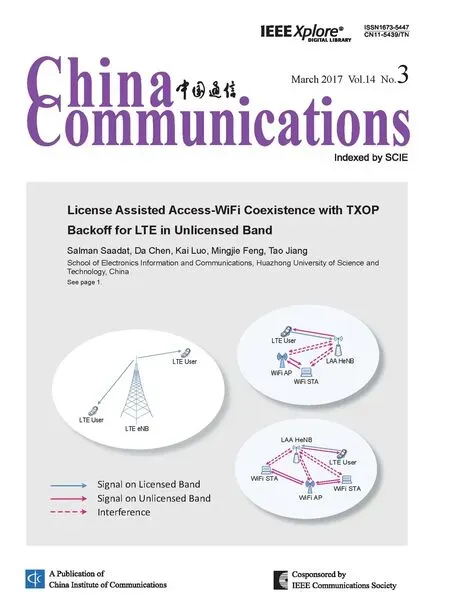A Power Reduction Method for Pilot Channel of LEO Satellite Based on Dynamic Compensation
2017-05-09YongZhangYongningZhuoJianWangSiyuanJiang
Yong Zhang *, Yongning Zhuo , Jian Wang , Siyuan Jiang
1 National Key Laboratory of Science and Technology on Communications, University of Electronic Science and Technology of China, Chengdu, China
2 Chengdu Guoheng Space technology and Engineering Inc, Chengdu, China
* The corresponding author, email: zhangyong5719@163.com
I. INTRODUCTION
Due to its reliability, robustness and wide area coverage,satellite-based navigation systems[1] and communication systems [2] have play important roles in the world. Especially,satellite communication has been an important component of the world wide communication system. However, nowadays the geostationary orbit has been crowded by so many geosynchronous earth orbit (GEO) satellites and can’t accommodate any more. For the smaller delay and path loss of signal propagation than that of GEO satellite, the low earth orbit (LEO)satellite communication system has received more and more attentions. Since 1990s, there had been several LEO systems developed to provide communication service, such as Iridium, Globalstar, Orbcomm, etc. From 2014 up to now, the latest plans of LEO system include MCSat, CANPOL-2, L5, which were proposed by France, Canada and Britain,respectively [3].
However, the small distance between LEO satellite and earth also implies the smaller coverage area than that of GEO satellite,therefore a global LEO system must consist of many LEO satellites, such as 66 in Iridium,48 in Globalstar, 36 in Orbcomm, etc. In these multi-node system the technologies about cooperative communications can be used [4-7]. Meanwhile, considering to reduce the total cost of system, the size of LEO satellite is quite smaller than that of GEO satellite, which usually implies that the energy assigned to communication payload is low.The weight of the first generation satellite of Globalstar system was 450kg, and the power consumption was 600W~2000W [8]. The second generation satellite of Iridium system was a cube of 0.3×0.4×0.7 m3, whose weight is only 50kg, and the power consumption of payload was only 50W~200W [9]. The weight of early test satellite of Orbcomm system was about 40 kg, and the satellite was a cylinder with the diameter of 1.06m and the height of 0.2m at folded status. The power of solar panels was only 200W [10]. The weight of CDS-3 satellite of Orbcomm system launched in 2008 was only 80 kg [11]. The first LEO satellite of China for communication was called “Chang Xin Yi Hao”, which was developed by Chinese Academy of Sciences and launched in 2003. This satellite was a cube of 0.59×0.59×1.09m3, and its weight was only 88kg. The frequency for communication was in UHF band [12], the average power consumption was only 30W, and the peak power consumption was 75.7W~80.7W [13].Two “Pi Xing Yi Hao-A” LEO satellites were launched in 2010, which were two cubes with a length of 0.15m and developed by Zhejiang University. The weight of each satellite was only 3.5 kg, and the power consumption was only 3.5w [14]. The last LEO satellite of china for mobile comunicaiton was developed by Tsinghua University and Beijing Xinwei Telecom Technology Co.,Ltd. The satellite was about 135kg, and launched in 2014 [15].
As mentioned above, generally due to the limited size of LEO satellite, the energy assigned to communication payload of LEO satellite is also limited, therefore the communication technologies applied to LEO system must be considered carefully and suitable to the low power status. Because code division multiple access (CDMA) technology has lower power and timing requirement than time division multiple access (TDMA), it had received many attention about its applications in LEO communication since 1990s when the CDMA occurred. The analysis of performance at different conditions is an important research direction for CDMA-based LEO satellite mobile communication. In [16], the user uplink was considered as quasi-synchronous CDMA link, the affect of quasi-synchronous error to broadband CDMA mobile satellite system was analyzed, and a quasi-synchronous implement strategy was also proposed. In[17], the performance of direct sequence CDMA applied in LEO system was analyzed,and the comparison of performance between LEO system and terrestrial cellular system also was done. The authors indicated that the performance in LEO system was worse than that in terrestrial system, but under some power controlling conditions the performance could be improved. In [18], the important problems, such as topology and capacity of the satellite network, were considered and analyzed. In [19], the performance of the CDMA downlink of LEO mobile satellite was analyzed. A two-state fading channel model was considered. In the non-shadowed state, the signal envelope was characterized by Rician statistics and in the shadowed state by the Rayleigh statistics. Other research, in the performance analysis of CDMA-based LEO system, involved the affect of multiple access interference [20, 21], the packet loss probability under particular channel conditions[22], the affect of ionospheric scintillations[23], etc. In addition to performance analysis,some CDMA processing technologies applied in LEO system also were developed, such as code acquisition and carrier tracking[24].In [25], a simple demodulate method was proposed without phase lock loop (PLL) in the case of the large Doppler frequency offset.Multipath diversity and multi-satellite diversity are also the important technologies in CDMA-based LEO mobile satellite communication system[26, 27]. The received signal from LEO satellite is very weak, therefore the code acquisition under low signal noise ratio (SNR)is an important technique[28]. Along with the deployment of 3G/4G terrestrial cellular system, whose technologies applied in LEO system were also received attention, in [27],the performance of WCDMA and OFDM were compared under LEO mobile satellite condition. Although the LEO mobile satellite communication had been a research hot point since the 1990s, the CDMA is still one of the main multiple access technologies, and the recent research result can be found in [30, 31].
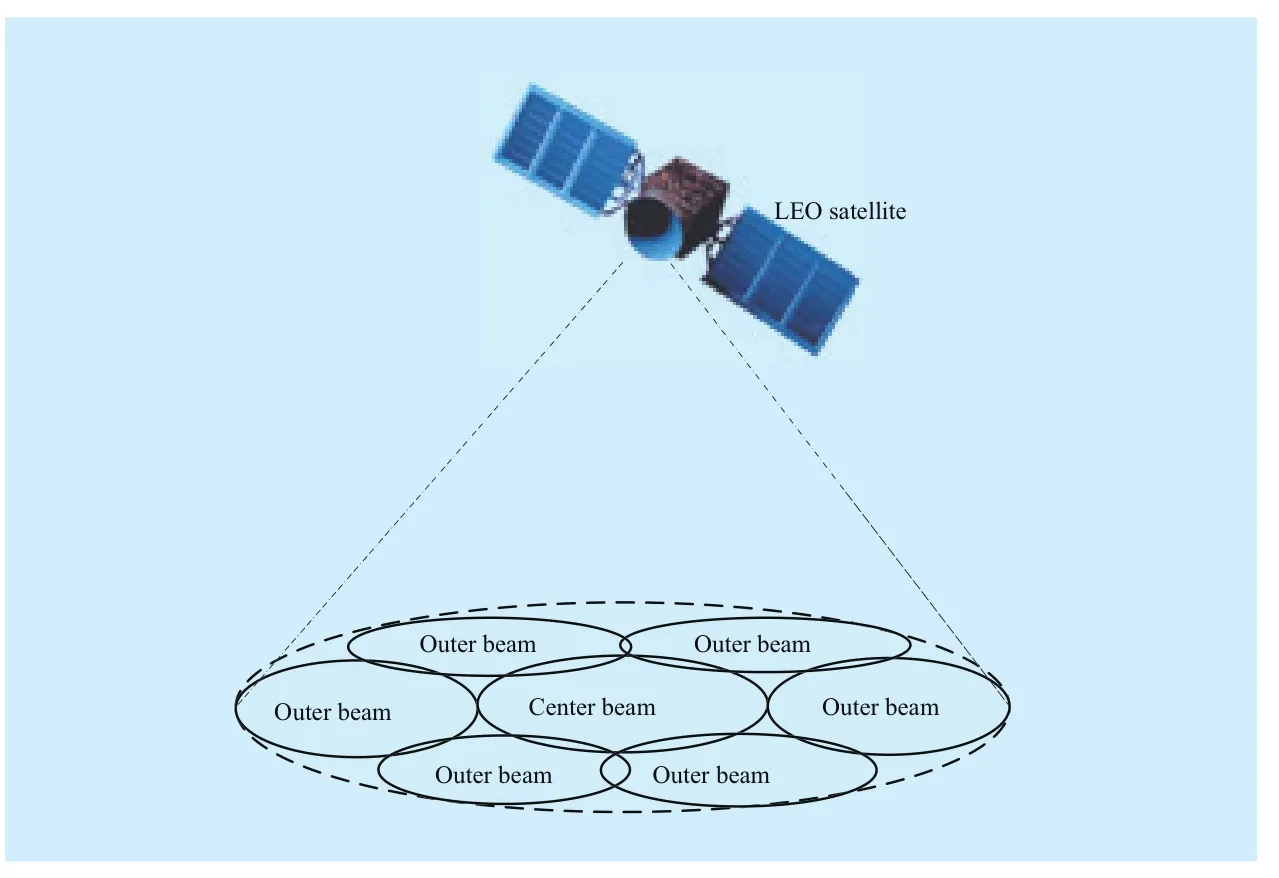
Fig. 1 Illustration of downlink coverage of multiple beam LEO satellite
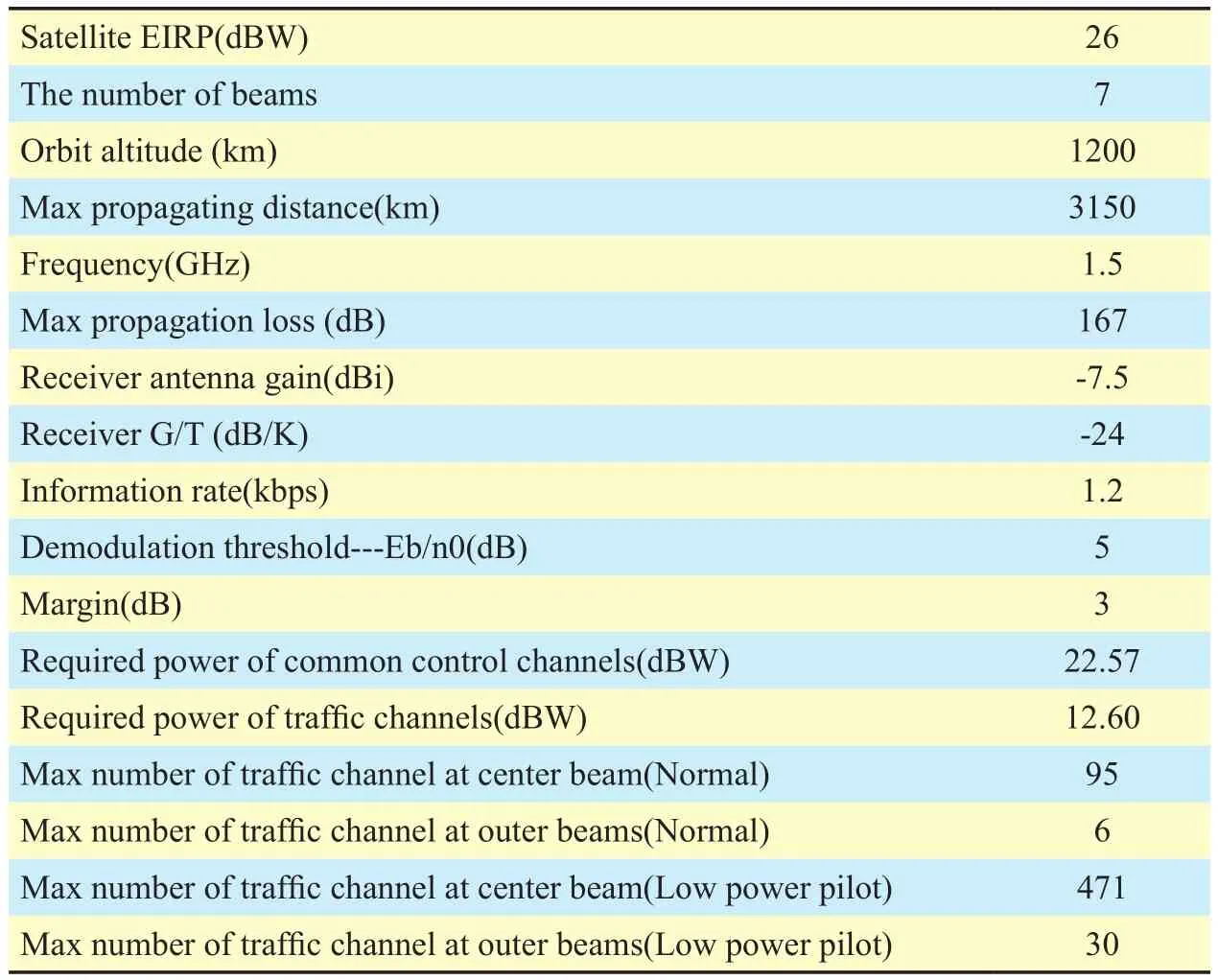
Table I A example of LEO satellite-ground downlink budget
As mentioned above, there have been few research results focused on reducing the power requirement of communication payload of LEO satellite, however, it is very meaningful to develop low power technology especially for space power and size limited LEO mobile satellite communication system. In this paper,a new approach to reduce pilot channel power is proposed, it benefits expanding the capacity of LEO system.
II. PROBLEM DESCRIPTION
For the LEO mobile satellite communication system with large capacity, multiple beams technology usually is applied. A illustration of multiple beams for downlink is shown in Fig. 1.
In essence, the LEO mobile satellite communication still belongs to the wireless communication, and there are satellite-ground links and/or inter-satellite links in the system.A example of LEO satellite-ground downlink budget as follow.
For the communication system with large capacity, complex multiple access technology will generally be used, such as Globalstar system in which CDMA and Frequency division dual (FDD) are been combined [32].Therefore, in the example system, assuming that the number of transmitting beams of LEO satellite is 7, one is center beam, and the other are outer beam as shown in Fig. 1.The common control channels of each beam includes a pilot channel, a synchronic channel of 1.2kbps and a page channel of 1.2kbps.Assuming that the transmitting antenna gain of satellite is 6dB, the amplifier power is about 100W. For a typical CDMA system, a pilot channel will be set for earth mobile station(EMS) to time and track carrier. However, the power consumption of pilot channel is great higher than a traffic channel about 10dB [33].As shown in the Table 1, the power assigned to control channels is great more than that assigned to traffic channels.
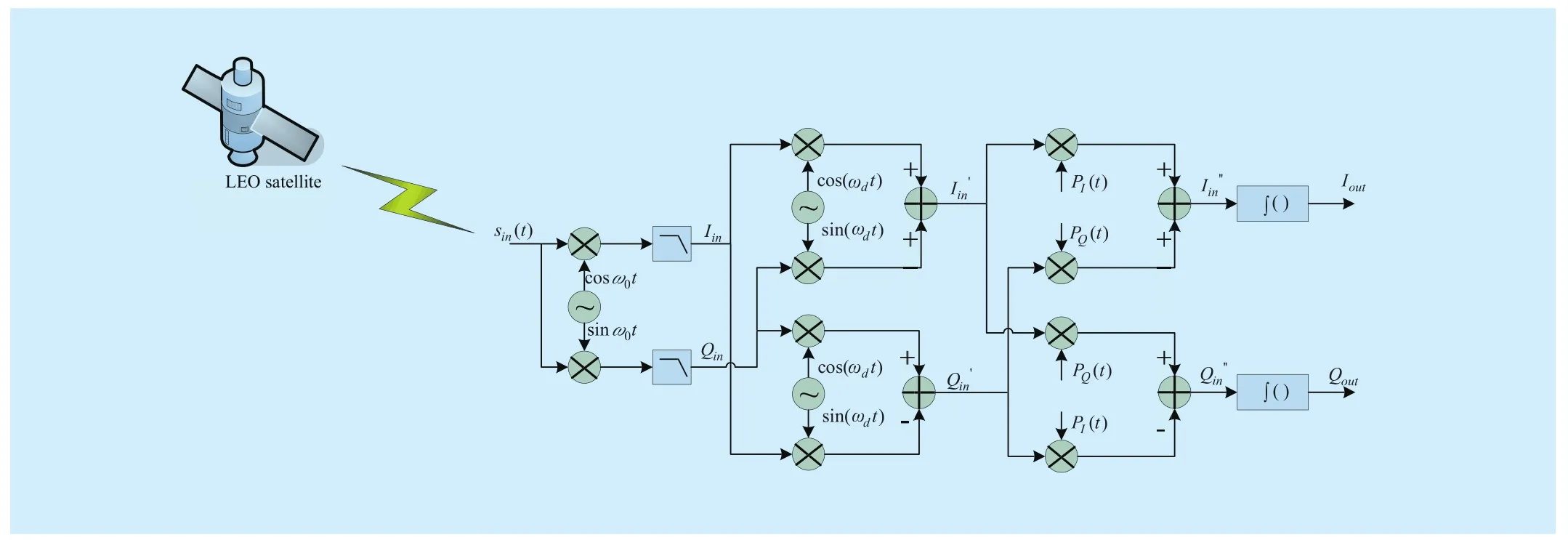
Fig. 2 The pre-processing block diagram
Assume to decrease the pilot channel power in each beam 3dB, the saved power can be used to crease the number of traffic channels, as shown in Table 1. Under the low power pilot mode, all saved power is assigned to traffic channels in center beam.The number of traffic channel can increase to 5 times the number under normal mode. When the saved power is all assigned to the traffic channels of outer beams, 5 times increase can still be achieved. However, the decrease of pilot power leads to a long period of time to accumulate the energy for improving receiving SNR of pilot channel, therefore, receiver will be difficult to adapt to the high dynamic of LEO satellite. A new approach must be proposed to solve the problem.
III. RECEIVING PRE-PROCESSING AND DYNAMIC COMPENSATION METHOD
3.1 Pre-processing
The proposed low power processing framework consists a few parts. Firstly, the transmitting power of downlink pilot channel is reduced. Secondly, pre-processing will be employed to improve the receiving SNR of pilot channel. Finally, the dynamic compensation method is used to improving the carrier tracking performance.
The pre-processing block diagram is as shown in Fig. 2.
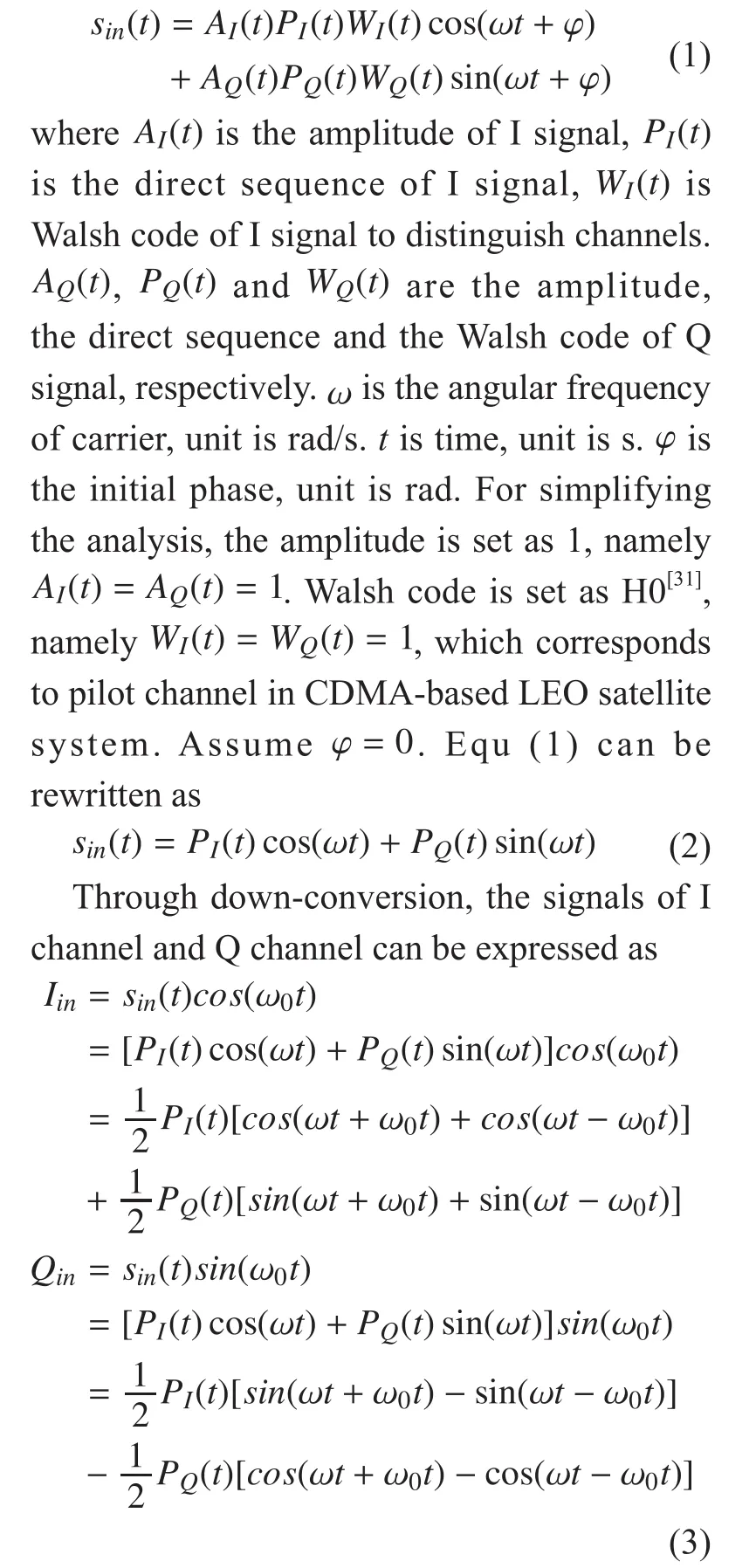
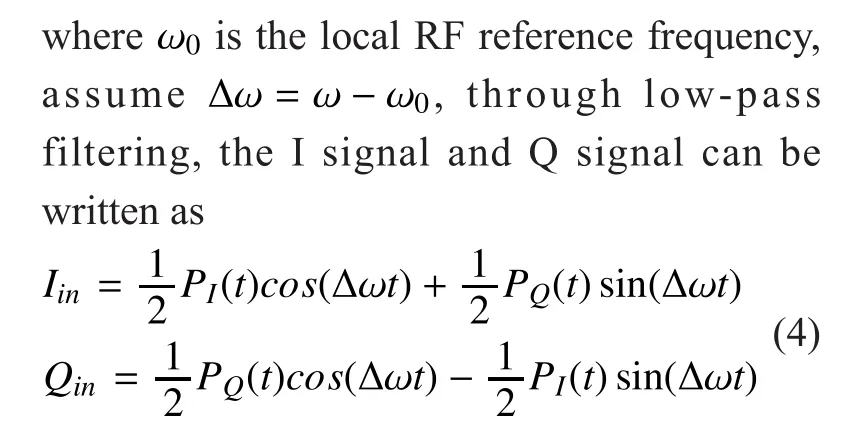
As illustrated in Fig. 2, the signals of equ(4)are mixed with other local reference, and the outputs can be written as
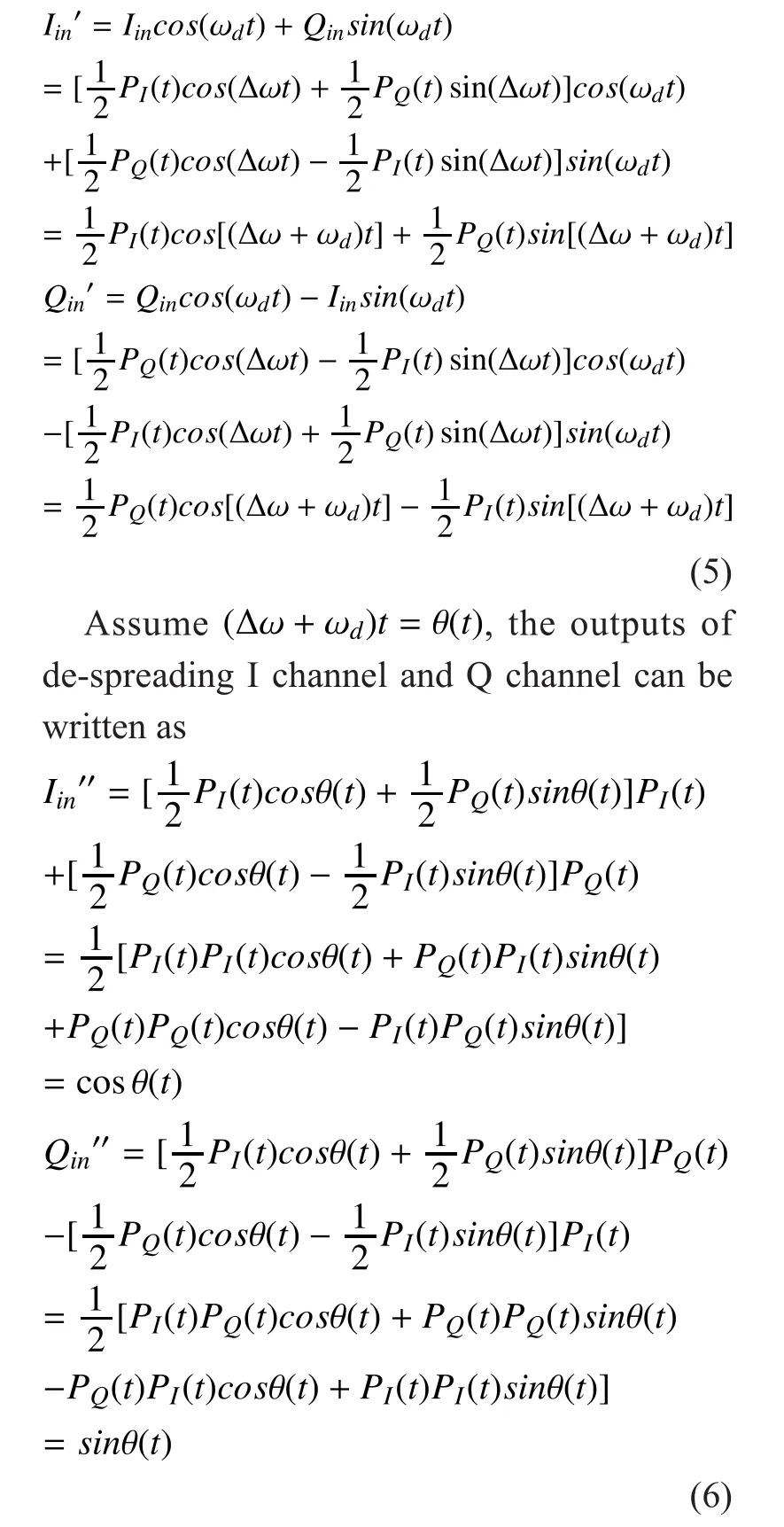
The coherent integration of I channel can be written as

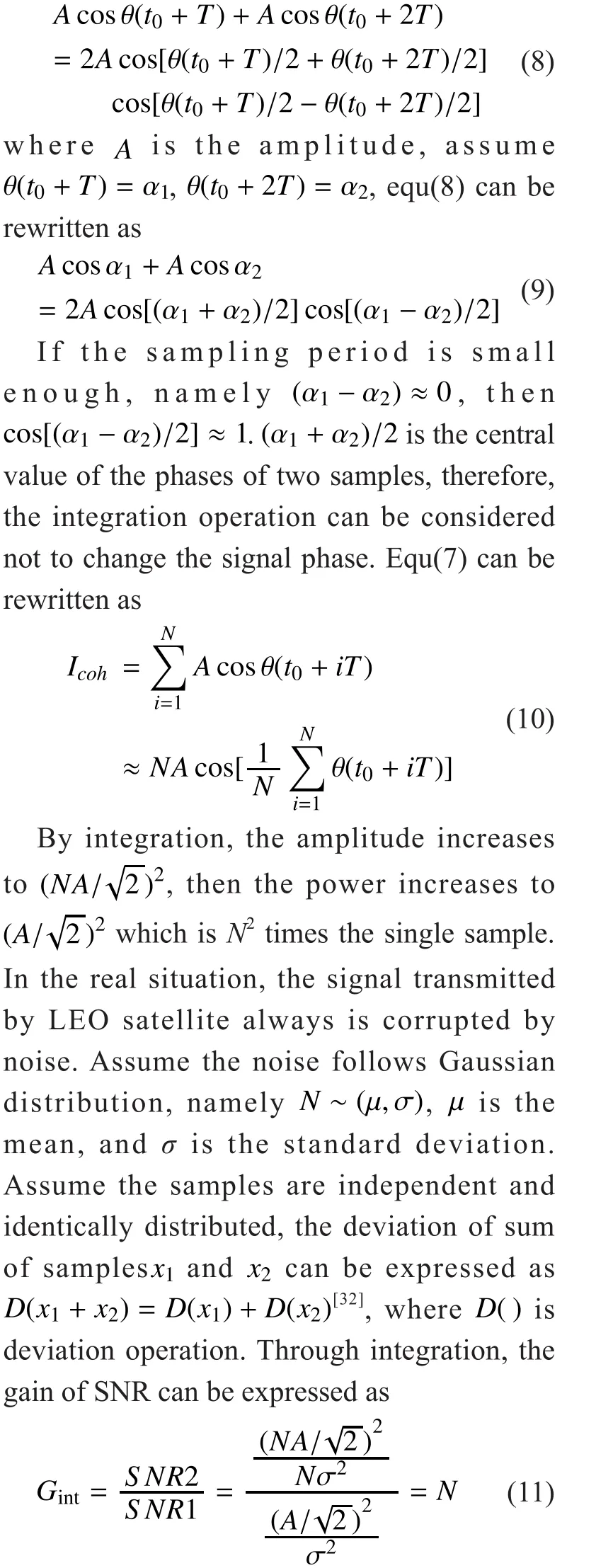
3.2 Dynamic Compensation Method
As mentioned above, the coherent integration is a effective way to improve SNR, which also implies the reduced power requirement of downlink for LEO satellite. Theoretically, the longer the integration period is,the higher the SNR will be, and the lower the requirement for satellite power will be.However, the integration period is constrained by dynamicity of LEO satellite which leads the high Doppler shift and the change rate in the frequency of downlink. Assume that receiver keeps carrier tracking by phase lock loop (PLL), the update period of PLL is just the integration period T. Assumeis the change rate of Doppler shift depending on time t, the phase variation of carrier in the update period can be expressed as
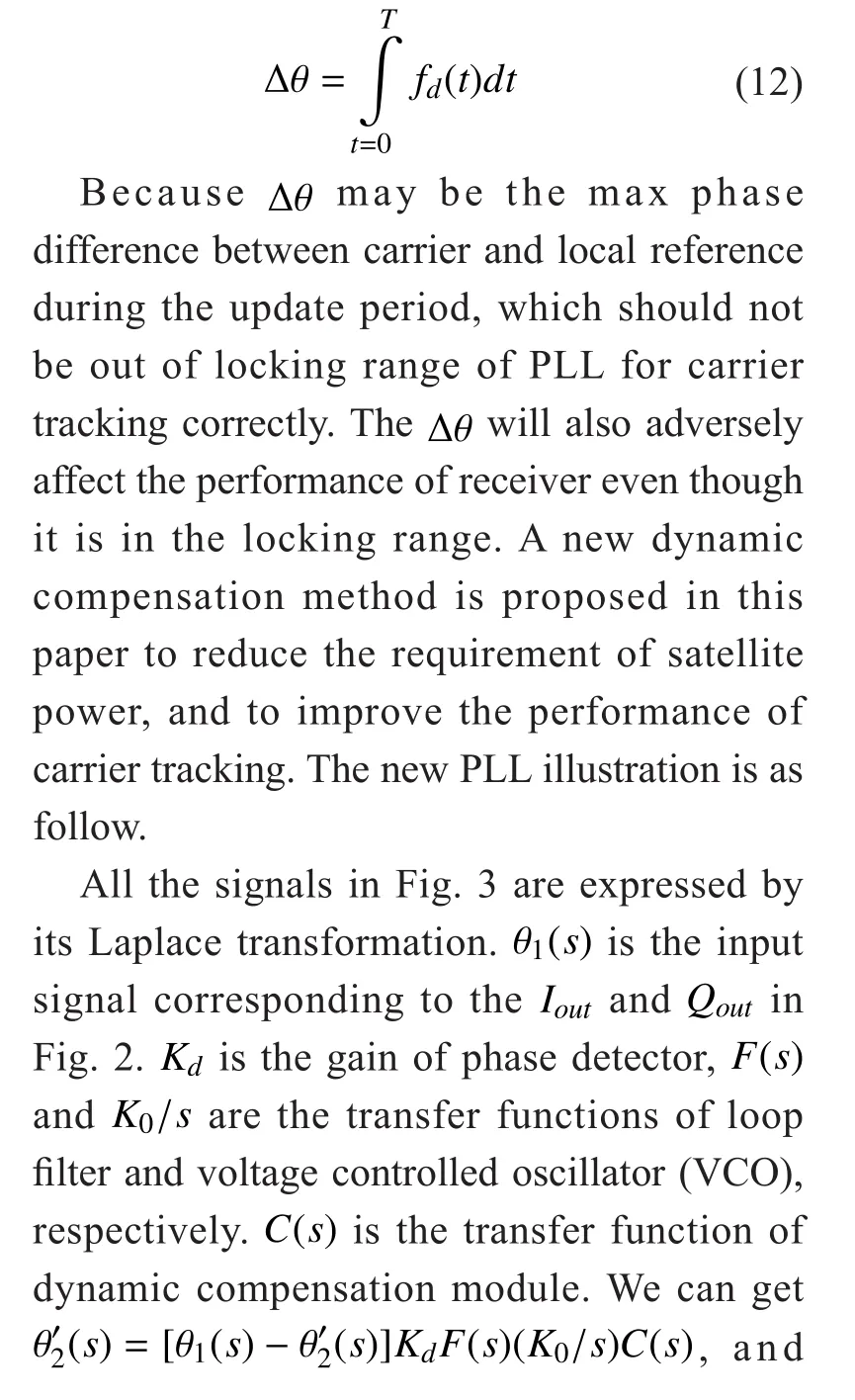
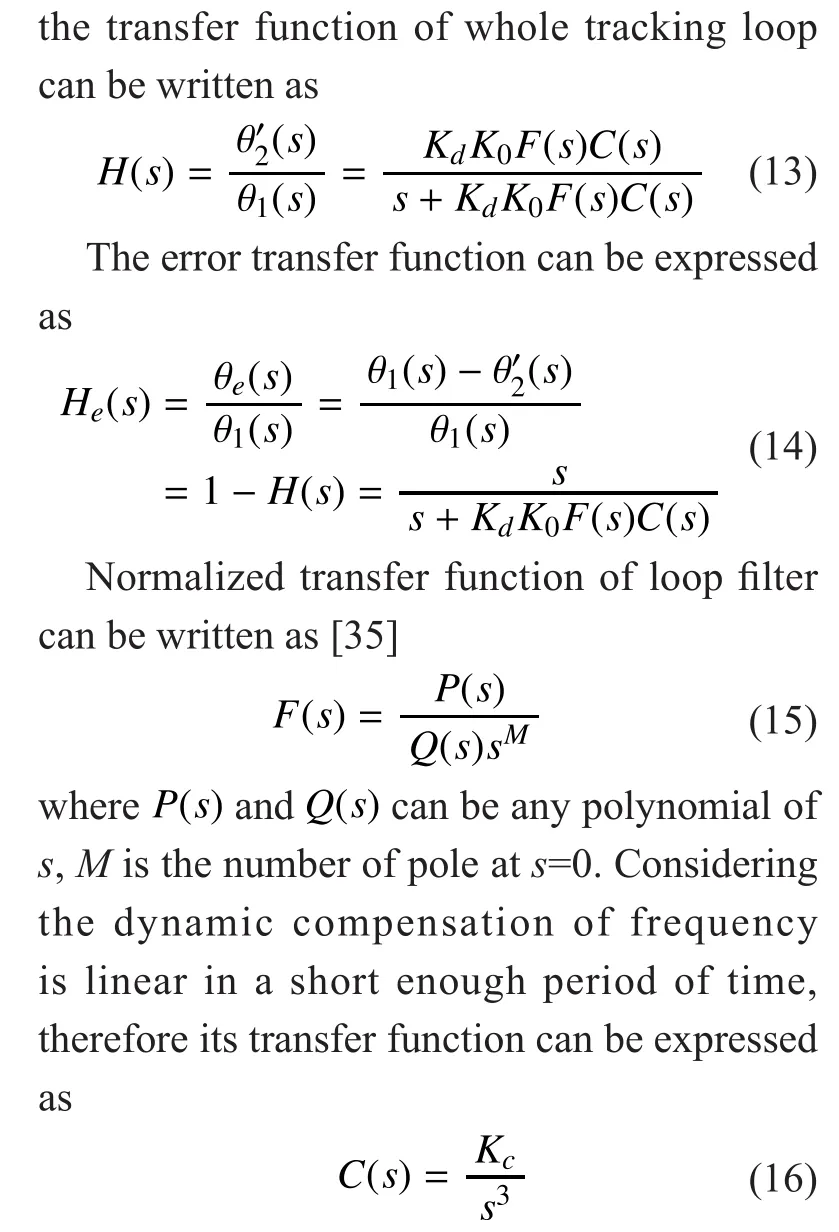
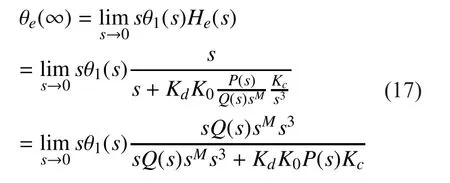
There is a large relative velocity between the LEO satellite and the ground, or between satellites, therefore the signal obtained by receiver is affected by the high Doppler shift and change rate in the frequency. The change rate in the frequency can be considered to be linear in a short enough period of time, and the input signal to tracking loop can be written as

Fig. 3 illustration of new PLL for dynamic compensation

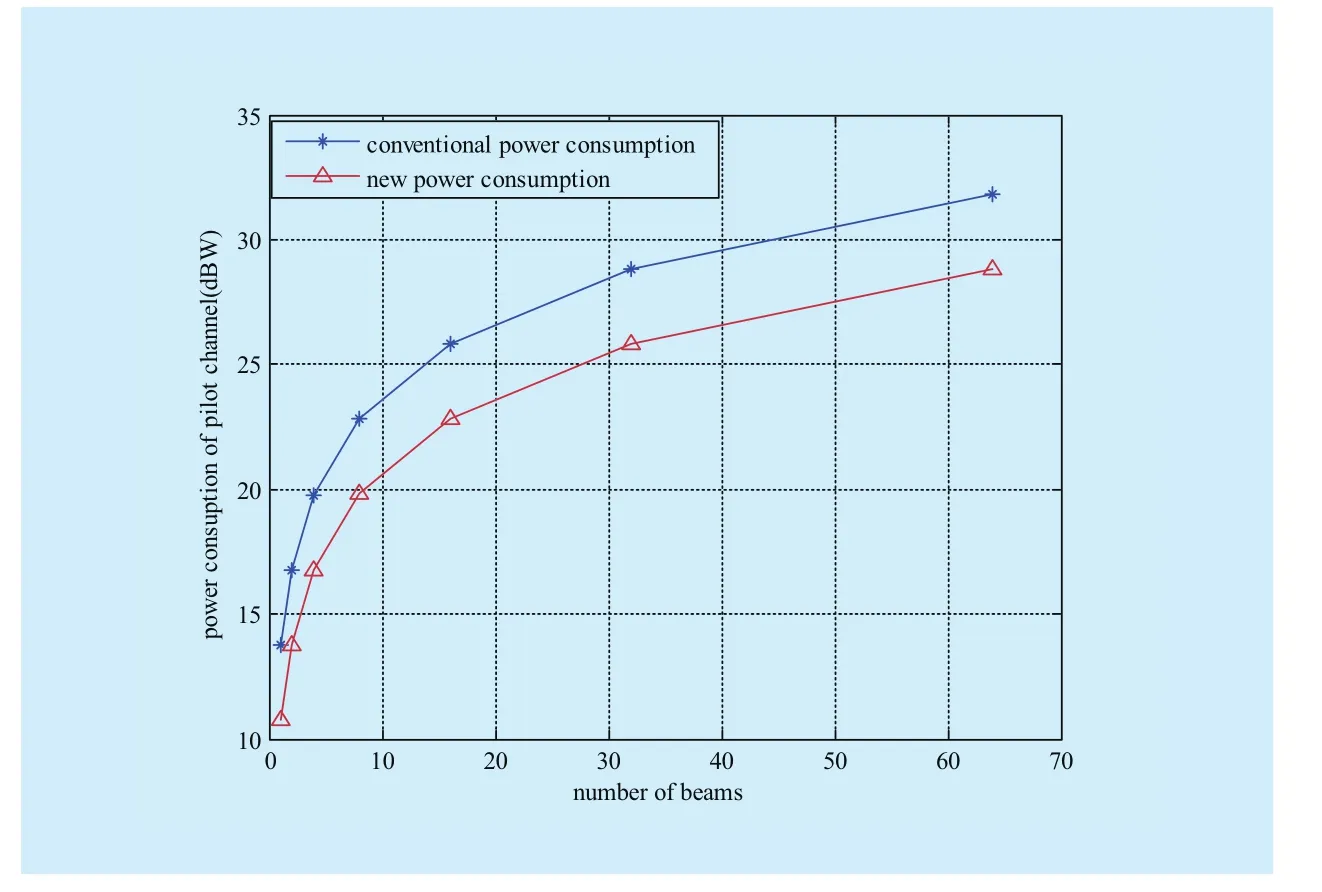
Fig. 4 Power consumption comparison of pilot channels
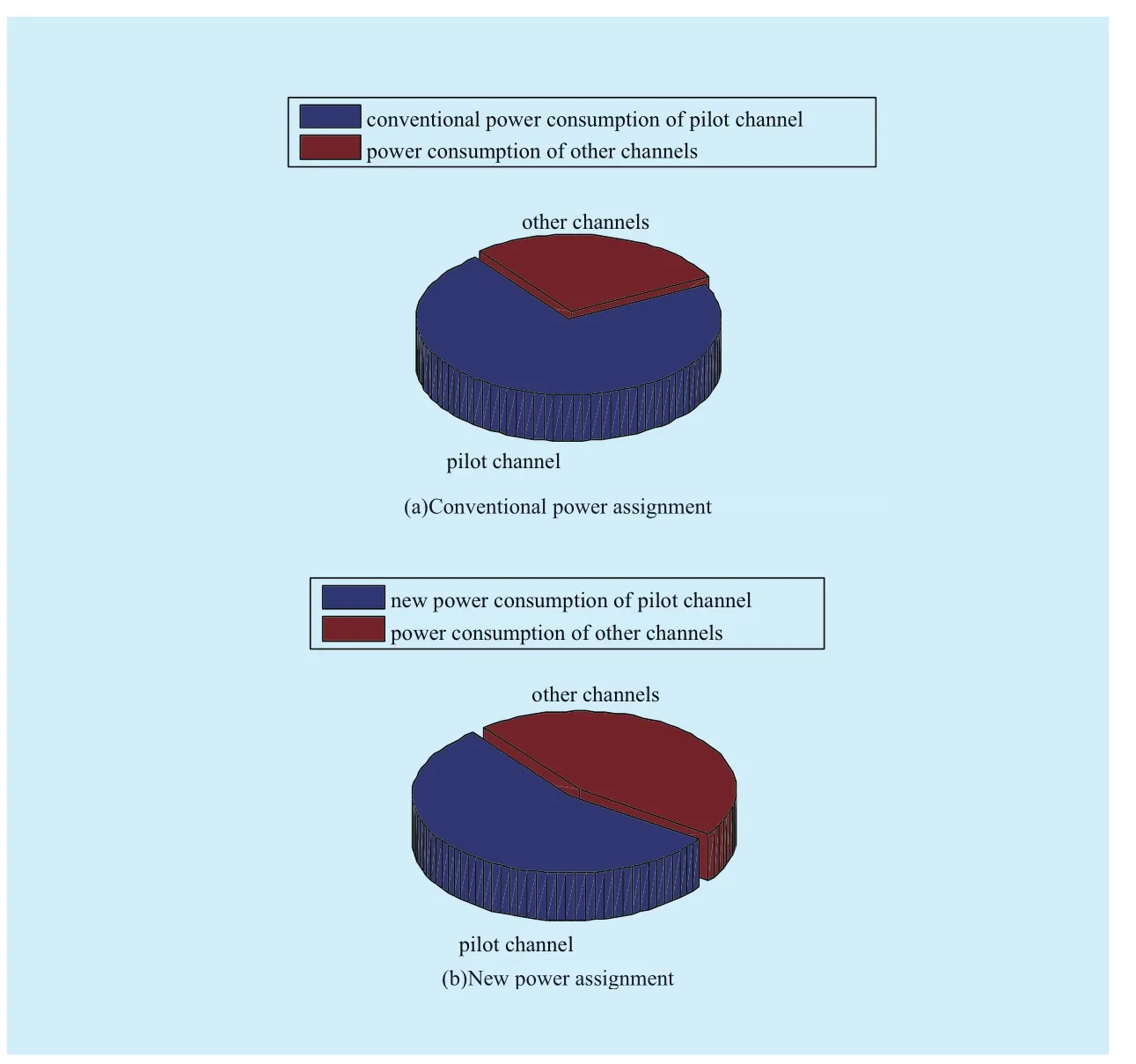
Fig. 5 Comparison between two type of power assignment (Available total power is the same)
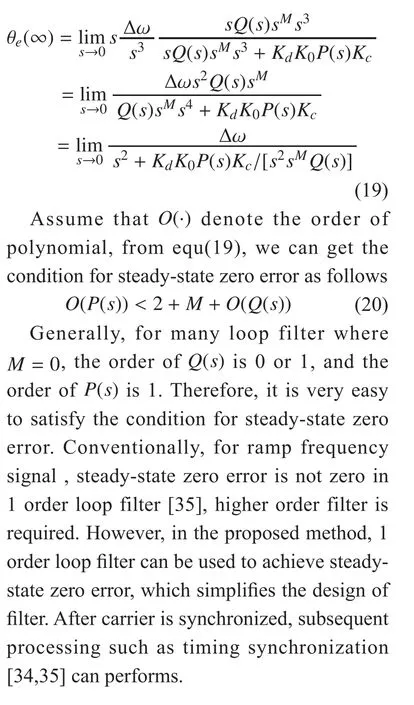
IV. SIMULATION RESULTS
Assume that there are 7 downlink beams arranged as shown in Fig. 1. A pilot channel,a synchronic channel, a page channel and a traffic channel are set in each beam. Besides the pilot channel, other channels have the same power consumption. The power consumption of pilot channel is set as 9dB higher than that of other channel. Downlink frequency is set as 1.5GHz, orbit attitude is set as 1200km.Information rate of each channel, except the pilot channel, is set as 1.2kbps. The Walsh code of each channel is set as in [32]. Threshold for demodulation (Eb/n0) is set as 5dB. For new method proposed in this paper, the power requirement for pilot channel is set as 3dB lower than that of conventional pilot channel.Other conditions is the same as Table 1.
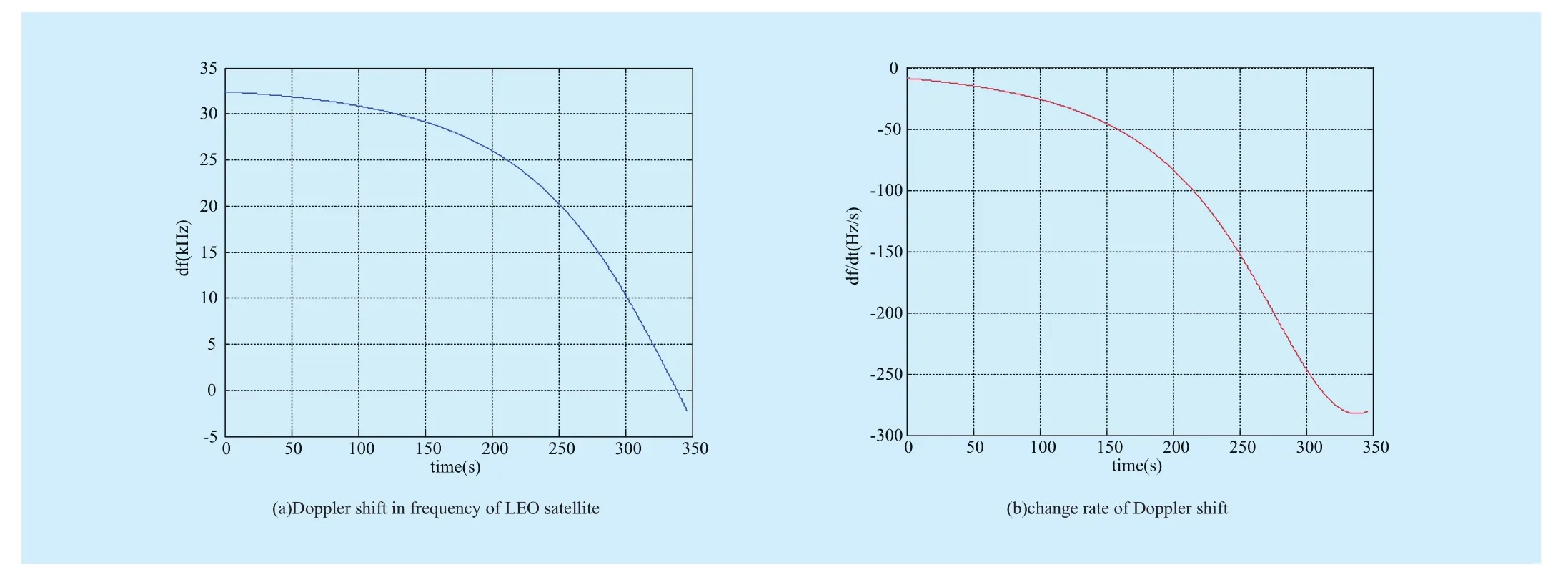
Fig. 6 The typical Doppler characteristics of LEO satellite
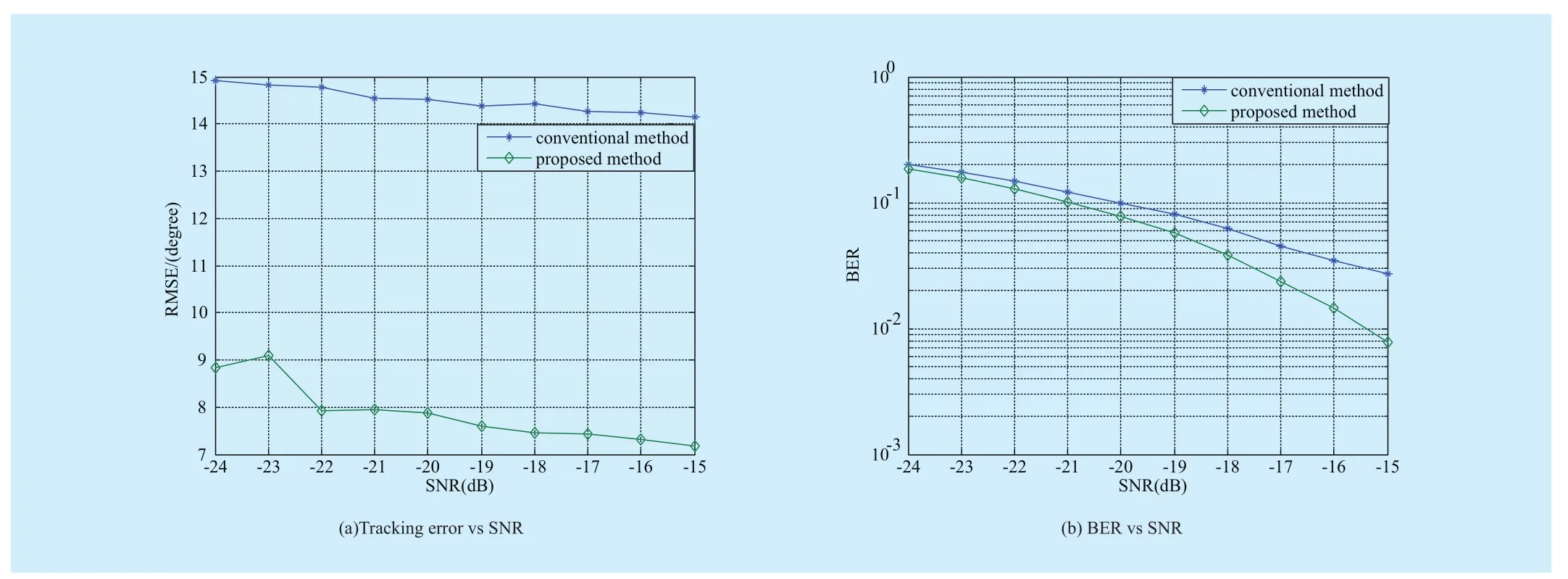
Fig. 7 The tracking and BER performance with 1 order loop filter
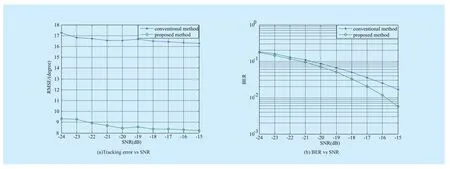
Fig. 8 The tracking and BER performance with 2 order loop filter
As shown in Fig. 4, because each beam includes a pilot channel, the power consumption of all pilot channels is reduced as 3dB regardless of the number of beam.In the conventional systems, such as IS-95 based on CDMA technology, the power of pilot channel is 10dB higher than that of other channel [33]. The Globalstar, a LEO satellite communication system, is also based on the CDMA technology.
Conventional power assignment about the pilot channel and the other channels is shown in Fig. 5(a). The new assignment whose power consumption of pilot channel is reduced 3dB,as shown in Fig. 5(b), will obtain more power assigned to transmit useful information than conventional assignment.
Fig. 6 shows the Doppler characteristics of LEO satellite, where the altitude of satellite is set as 800 km. As shown in Fig. 6(a) and(b), the Doppler shift and its change rate are time-varying, and these characters must be considered in dynamic compensation.
Assume that the change rate of frequency is 1500Hz/s, the order of loop filter is 1. As shown in Fig. 7(a), the tracking error of the new method proposed for the pilot channel can be great lower than that of conventional method without dynamic compensation. The conventional 1 order loop can be found in[35]. When SNR is set as -15dB, the root mean square error (RMSE) of the new method is only 7.2 degree in contrast to 14.2 degree of conventional method. In CDMA-based LEO system, the pilot channel is as reference for time and carrier synchronization, therefore the bit-error rate (BER) performance of other channels will be affected by the tracking error of the pilot channel. As shown in Fig. 7(b),the new method proposed can improve BER performance than that of conventional method.In conventional method, there is no dynamic compensation in carrier tracking loop.
The loop filter is set as 2 order, and other conditions remain unchanged. The tracking loop and BER performance of the proposed new method are also improved than that of conventional method as shown in Fig. 8.Meanwhile, as shown in Fig. 7 and Fig. 8, the performance of 1 order loop filter is similar to that of 2 order loop filter, which is consistent with the theoretically deduced conclusion as equ(20).
V. CONCLUSION
In this paper, based on dynamic compensation idea, a new power reduction approach for pilot channel of LEO satellite is proposed. The main contributions as follows 1) Construct a new power reduction framework; 2) Construct a new carrier tracking loop with dynamic compensation; 3) Deduce the condition of steady-state zero error for tracking loop.
For the power consumption of pilot channel transmitting from LEO satellite is great more than other channel, reducing the power assignment to pilot channel will be helpful to greatly expand system capacity, 5 times capacity expanding can be achieved in the numerical example. In the earth mobile station, coherent integration is applied to improve receiving SNR of pilot channel.A long period of time for integration will affect the receiving performance due to the high dynamic, therefore a new carrier tracking loop with dynamic compensation is constructed. The dynamic compensation is based on the prior information of LEO orbit. The new transfer function of tracking loop with dynamic compensation and condition of steady-state zero error are also deduced. Numerical examples are provided to demonstrate effectiveness of the proposed approach.
ACKNOWLEDGEMENT
The authors would like to thank the reviewers for their detailed reviews and constructive comments, which have helped to improve the quality of this paper. This work in this paper is supported by the National High Technology Research and Development Program of China(863 Program) (No. 2012AA01A502), the National Natural Science Foundation of China(No. 61179006), and the Science and Technology Support Program of Sichuan Province(No. 2014GZX0004).
Reference
[1] Hou B, Zhang X, “A Dual-Satellite GNSS Positioning Algorithm of High Accuracy in Incomplete Condition”,China Communications, no.10,pp 58-68, Oct, 2016.
[2] Jian Y, Xiang C, Chunli L, “Capacity Maximization Based Power Loading Analysis for Digital Channelized Satcom Systems”,China Communications, no.05, pp 64-74, May, 2015.
[3] LIU Yeu, LIAO Chunfa, “Development of foreign emerging Satellite Internet constellation”,Science&Technology Review, no. 07, pp 139-148,Jul, 2016.(in Chinese)
[4] Bin Cao, Gang Feng, Yun Li, and Chonggang Wang, “Cooperative Media Access Control with Optimal Relay Selection in Error-prone Wireless Networks”,IEEE Transaction on Vehicular Technology, vol. 63, no. 1, pp 252 – 265, Jan, 2014.
[5] Yun Li, Zhenghua Zhang, Chonggang Wang,Weiliang Zhao, and Hsiao-Hwa Chen, “Blind Cooperative Communications for Multihop Ad Hoc Wireless Networks”,IEEE Transactions on Vehicular Technology, vol. 62, no. 7, pp 3110 –3122, Jul, 2013.
[6] Bin Cao, Yun Li, Chonggang Wang, and Gang Feng, “Dynamic cooperative media access control for wireless networks”,Wireless Communications and Mobile Computing, vol. 15, no. 13,pp 1759 – 1772, Jul, 2015.
[7] Yun Li, Shufang Song, and Mahmoud Daneshmand, “A Store-and-Forward Cooperative MAC for Wireless Ad Hoc Networks”,Mobile Networks & Applications, vol. 21, no. 6, pp 1-8, Jun,2016.
[8] Hirshfield E, “The Globalstar system breakthroughs in efficiency in microwave and signal processing technology ”,proceedings of the ELECTRO ‘96 Professional Program Proceedings,1996.
[9] WU Jianjun, ChENG Yuxin, LIANG Qinglin, et al, “The second generation of iridium (Iridium Next) and equipped with application”,proceedings of the Sixth annual conference on new technology of satellite communication, Beijing,China, 2010. (in Chinese)
[10] LIN Laixin, ““Orbit communication” low orbit data communication system”,Aerospace China,no. 9, pp 23-26, Sep, 1997. ( in Chinese)
[11] TAO Xiaofeng, LI Xiongfei, QU Jiqiang, et al,“Research on the development of Orbcomm satellite system and the latest developments”,Space Electronic Technology, no. 2, pp 29-36,Feb, 2015. ( in Chinese)
[12] JIANG Mianheng, “Development of “Chuang Xing Yi Hao” satellite and the trend of micro satellite ”,Bulletin of Chinese Academy of Sciences, no. 6, pp 420-422, Jun, 2003. (in Chinese)
[13] LI Guoxin, ZHANG Liqun, ZHANG Zhongwei, et al, ““Chuang Xing Yi Hao” micro satellite power subsystem ”,Aerospace Shanghai, no. 1, pp 41-45+60, Jan, 2006. (in Chinese)
[14] ”Pi Xing Yi Hao A” runs smoothly for 8 days and 8 nights,Space Exploration, pp 6, 2010(11): (in Chinese)
[15] China’s First LEO Mobile Communiations Satellite Passed Orbit Testing,China Communications, no. 12, pp 165, Dec, 2014.
[16] HAO Xuekun, MA Wenfeng, ZHANG Gengxin, et al, “Analysis of Quasi-Synchronous Broadband CDMA Mobile Satellite Communication”,Journal of UEST of China, no, 4, pp 378-382, Apr,2004. (in Chinese)
[17] Vojcic B R, Pickholtz R L, Milstein L B, “Performance of DS-CDMA with imperfect power control operating over a low earth orbiting satellite link”,IEEE Journal on Selected Areas in Communications, 560-567, 1994, 12(4):
[18] Werner M, Jahn A, Lutz E, et al, “Analysis of system parameters for LEO/ICO-satellite communication networks”,IEEE Journal on Selected Areas in Communications, vol. 13, no. 2, pp 371-381,Feb, 1995.
[19] Vojcic B R, Milstein L B, Pickholtz R L, “Downlink DS CDMA performance over a mobile satellite channel”,IEEE Transactions on Vehicular Technology, vol. 45, no. 3, pp 551-560, Mar, 1996.
[20] Jamalipour A, Ogawa A, “Packet admission control in a direct-sequence spread-spectrum LEO satellite communications network”,IEEE Journal on Selected Areas in Communications, vol. 15,no. 8, pp 1649-1656, Aug, 1997.
[21] Hongyi F, Guoan B, Arichandran K, “Effect of multiple access interference on performance of multi-beam CDMA-based LEO satellite systems”,Electronics Letters, vol. 34, no. 2, pp 149-150, Feb, 1998.
[22] Chockalingam A, Gang B, “Probability of miss analysis for packet CDMA acquisition on Rician-fading channels”,IEEE Communications Letters, vol. 2, no. 7, pp 177-179, Jul, 1998.
[23] Li S Y, Liu C H, “Impact of ionospheric scintillations on LEO satellite DS-CDMA communication system”,Electronics Letters, vol. 40, no. 8,pp 486-488, Aug, 2004.
[24] GUAN Yunfeng, ZHANG Chaoyang, QOU Peiliang, “Signal Detection and Acquisition in CDMA LEO Satellite Communication System with its FPGA Implementation”,Journal of Circuits and Systems, no. 1, pp 21-26, Jan, 2003.( in Chinese)
[25] Kajiwara A, “Mobile satellite CDMA system robust to Doppler shift”,IEEE Transactions on Vehicular Technology, vol. 44, no. 3, pp 480-486,Mar, 1995.
[26] YU Kaiyong, “Research on Rake Receiving Performance Based on Multi-satellite Diversity”,Radio Engineering, no. 4, pp 62-66, Apr, 2014.(in Chinese)
[27] Glisic S G, Talvitie J J, Kumpumaki T, et al, “Design study for a CDMA-based LEO satellite network:downlink system level parameters”,IEEE Journal on Selected Areas in Communications, vol. 14,no. 9, pp 1796-1808, Sep, 1996.
[28] Glisic S G, Poutanen T J, Wu W W, et al, “New PN code acquisition scheme for CDMA networks with low signal-to-noise ratios”,IEEE Transactions on Communications, vol. 47, no. 2,pp 300-310, Feb, 1999.
[29] Papathanassiou A, Salkintzis A K, Mathiopoulos P T, “A comparison study of the uplink performance of W-CDMA and OFDM for mobile multimedia communications via LEO satellites”,IEEE Personal Communications, vol. 8, no. 3, pp 35-43, Mar, 2001.
[30] WU Tuanfeng, WANG Hongda, GUO Ronghai,et al, “Design and Simulation of Signal Transmission Scheme over Low Earth Orbit Mobile Satellite Channel”,Journal of System Simulation,no. 8, pp 1970-1974, Aug, 2013.(in Chinese)
[31] LIANG Guang, GONG Wenbin, LIU Huijie, et al,“The Design of Reconfigurable LEO Satellite Communication System”,Journal of Astronautics, no. 1, pp 185-191, Jan, 2010. (in Chinese)
[32] FU Haiyang, DONG Li, FENG Min, “Comparison and development of satellite mobile communication system”,Telecommunications Information, no. 03, pp 25-29, Mar, 2007. ( in Chinese)
[33] Jhong Sam Li, Leonard E Miller, CDMA Systems Engineering Handbook, Beijing, Posts and Telecommunications Press, 2000.( in Chinese)
[34] SHENG Zhou, XIE Shiqian, PAN Chengyi, Probability theory and mathematical statistics, Beijing, Higher Education Press, 1988.( in Chinese)
[35] Roland E Best, Phase-Locked Loops: Design,Simulation, and Applications (5thEdition), Beijing, Tsinghua University Press, 2007.( in Chinese)
[36] LI Yun, ZHAO Yanli, ZHAO Weiliang, WANG Yong, LIU Qilie, “Improved timing error detection algorithm in satellite communications”,Systems Engineering and Electronics, vol. 36,no.1, pp 149-154, Jan, 2014. (in Chinese)
[37] CAO Bin, MEI Hang, YANG Xiong, ZHAO Yanli,LI Yun, “Pilot-based timing synchronization algorithm in satellite mobile communication system”,Journal of Chongqing University of Posts and telecommunications (Natural Science Edition), vol. 27, no. 3, pp 323-328, Mar, 2015.(in Chinese)
杂志排行
China Communications的其它文章
- A Novel Low Density Parity Check Coded Differential Amplitude and Pulse Position Modulation Free-Space Optical System for Turbulent Channel
- Direction of Arrivals Estimation for Correlated Broadband Radio Signals by MVDR Algorithm Using Wavelet
- Signal Path Reckoning Localization Method in Multipath Environment
- Adaptive Application Offloading Decision and Transmission Scheduling for Mobile Cloud Computing
- Degree-Based Probabilistic Caching in Content-Centric Networking
- Efficient XML Query and Update Processing Using A Novel Prime-Based Middle Fraction Labeling Scheme
